Words at work
– 7 min read
What are the best content marketing style guide examples?

In a world where content is king, it’s that much more important to get it right. After all, when you’re trying to draw in those who may or may not know the company, there’s always the potential to make waves — for good or bad.
Creating a style guide that spells out the details of what good content means for your company is the key to getting it right.
To help you get started, here are nine of the best style guides content marketers should check out:
1. The best partner style guide: Medium’s Content Style Guide
The Medium member content guidelines provide contributors to the site’s partner program with suggestions for succeeding within the confines of their curation guidelines. It also describes their general content requirements, yet the page itself is concise without sacrificing on value. There’s also plenty of supplementary information provided by links on the page and throughout the help center for those who want to go deeper. Since the partner program is open to the public, and writers can cover any topic they choose, this approach fits the company’s needs.
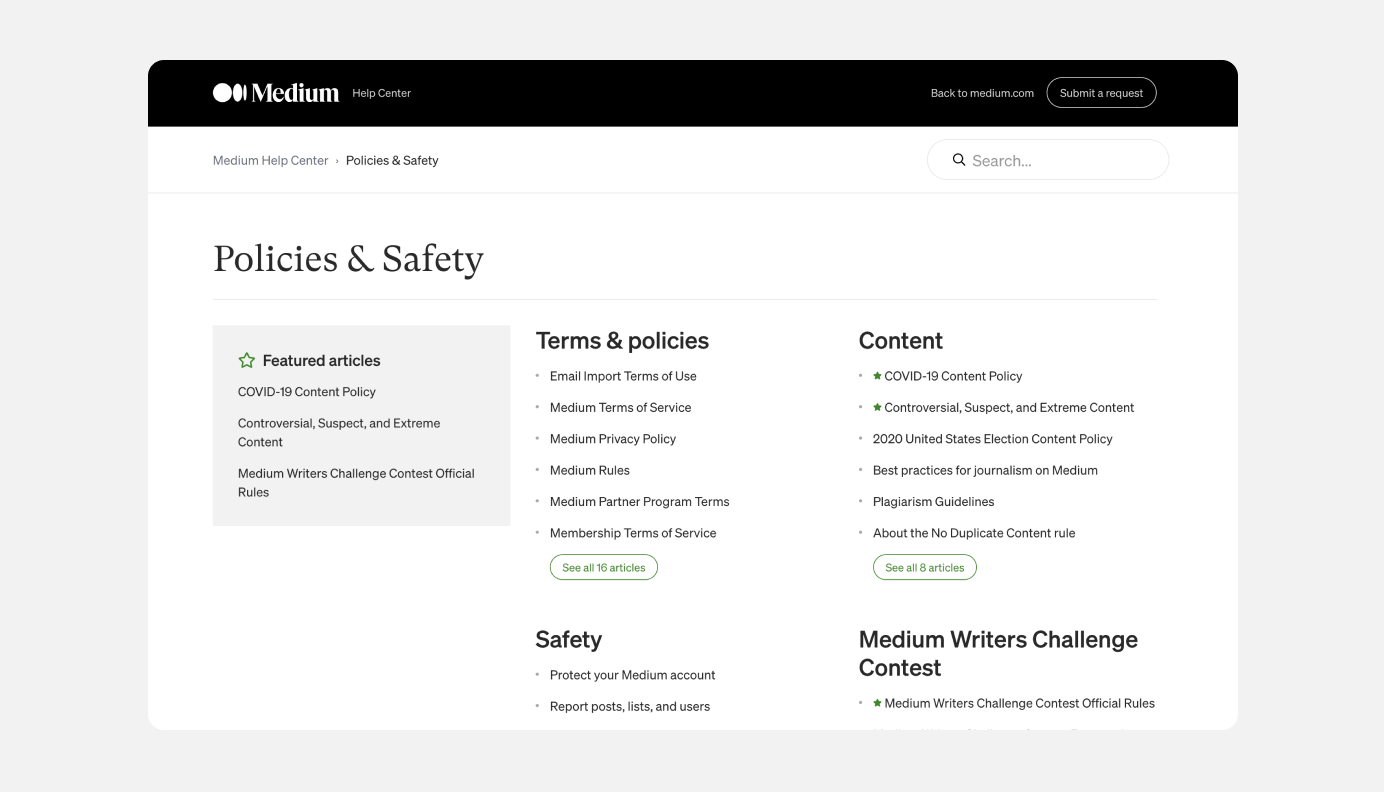
2. The best style guide template: Groove
Short and sweet is Groove’s main objective for their style guide, and they manage it very well, much like Medium. This style guide example is less than 1,000 words in length, but it still manages to hit on the main points of brand, tone, what the brand is (and isn’t) as well as how to put those into use. Compared to Medium, this is much more in-depth when it comes to the craft of writing, which makes sense when there are those more hard-and-fast rules for things like formatting and sourcing.
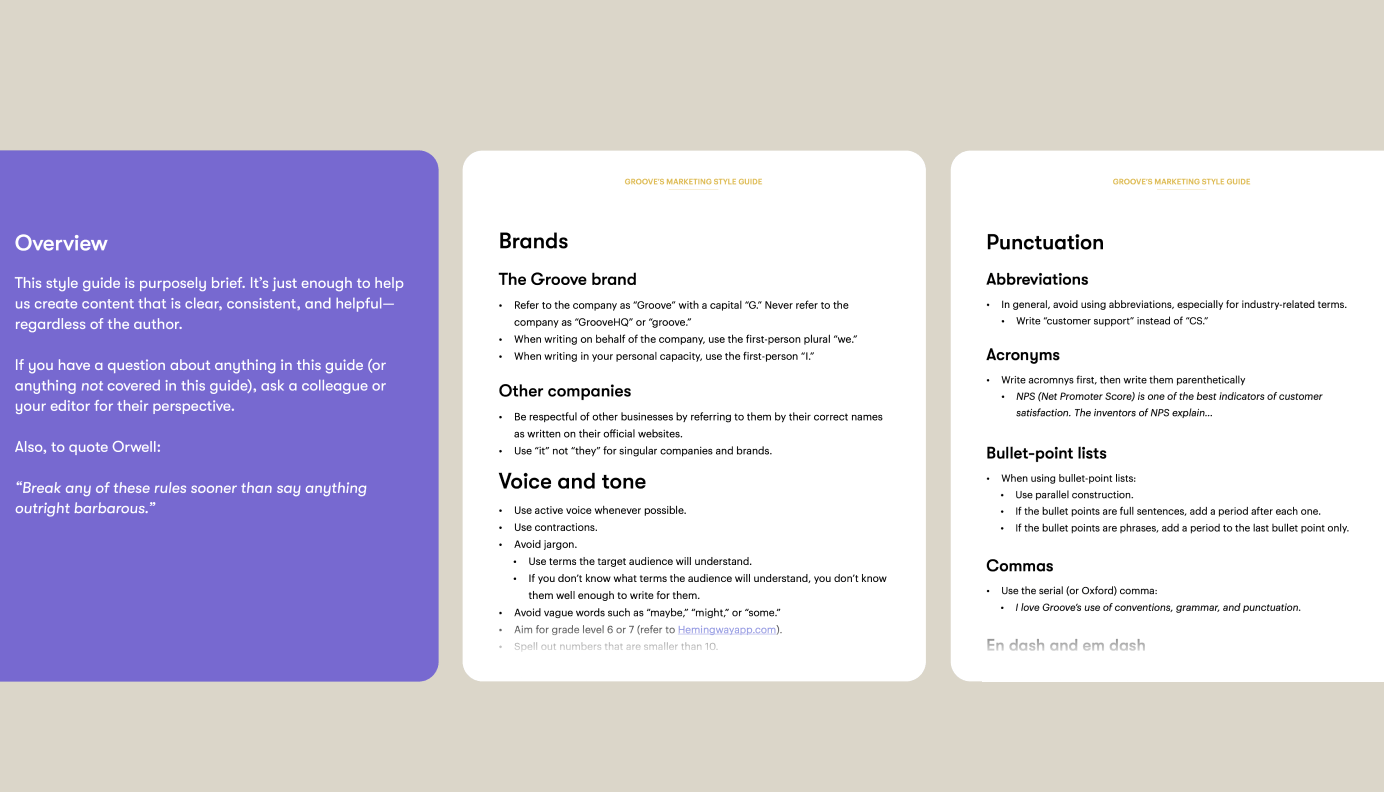
3. The best social media style guide: NYU
When it comes to social media, the writing rules may not always stay as rigid as something like a blog post, but it’s still important to define the boundaries of what’s acceptable and what isn’t from a branding perspective. NYU’s social media style guide accomplishes this task by taking a creator-first approach. It begins by running through the basics — which accounts they cover, what the voice for those accounts is and less common (but still vital) topics like ownership of posts, transparency, and publishing cadences to stick to. That makes it easy for those running the accounts to understand expectations.
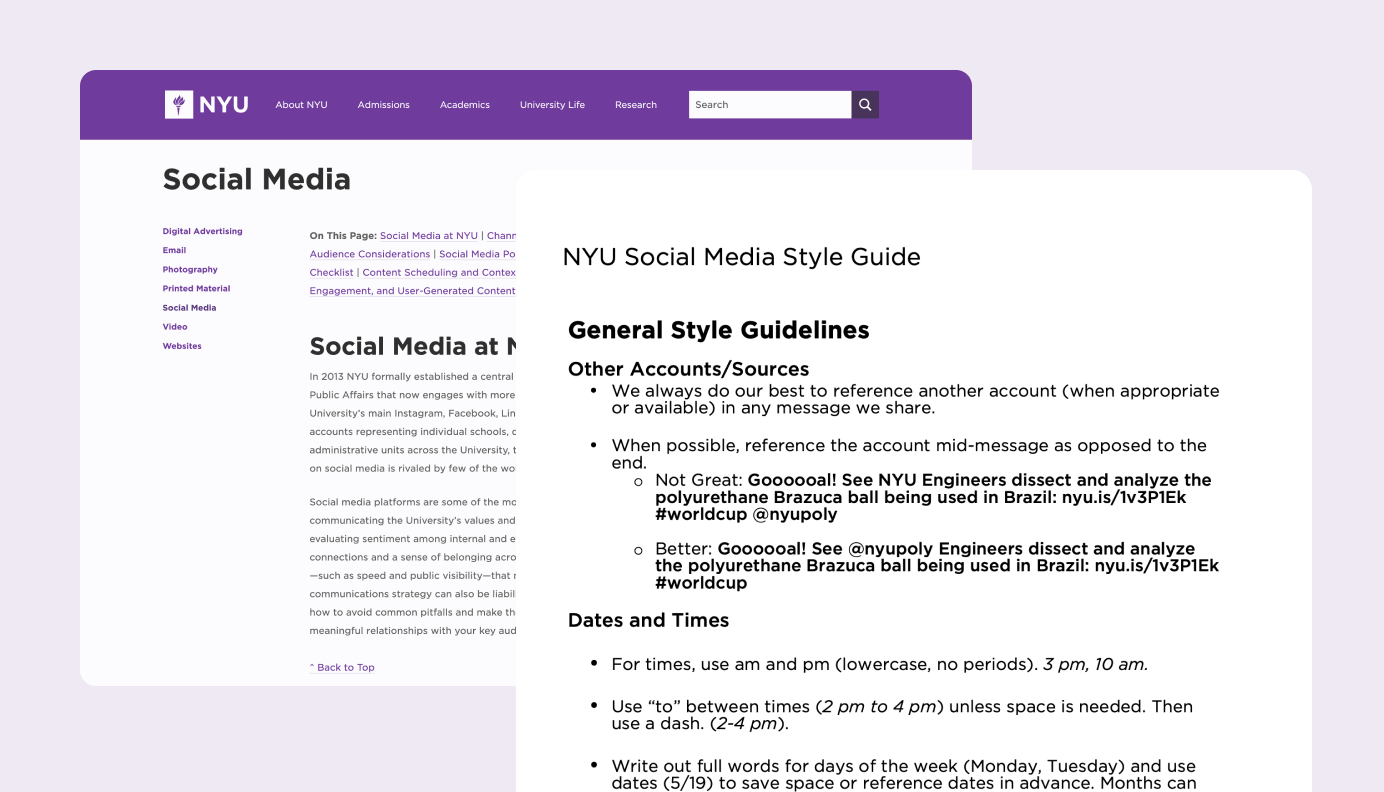
4. Best SEO style guide: Search Engine Journal
The Search Engine Journal style guide site is set up for ease of navigation, which is important for a guide that is this in-depth about its requirements for writers. Contributors are given details about what they’re expected to do and what they should expect by working with them. For example, it has a contributor agreement, as well as vital information like topics, post length, disclosures and linking practices. But one of the most important parts of this guide is hidden in plain sight: It includes a dated note at the top of each page for updates. This allows the guide to be a living document that can easily adjust to the company’s needs.
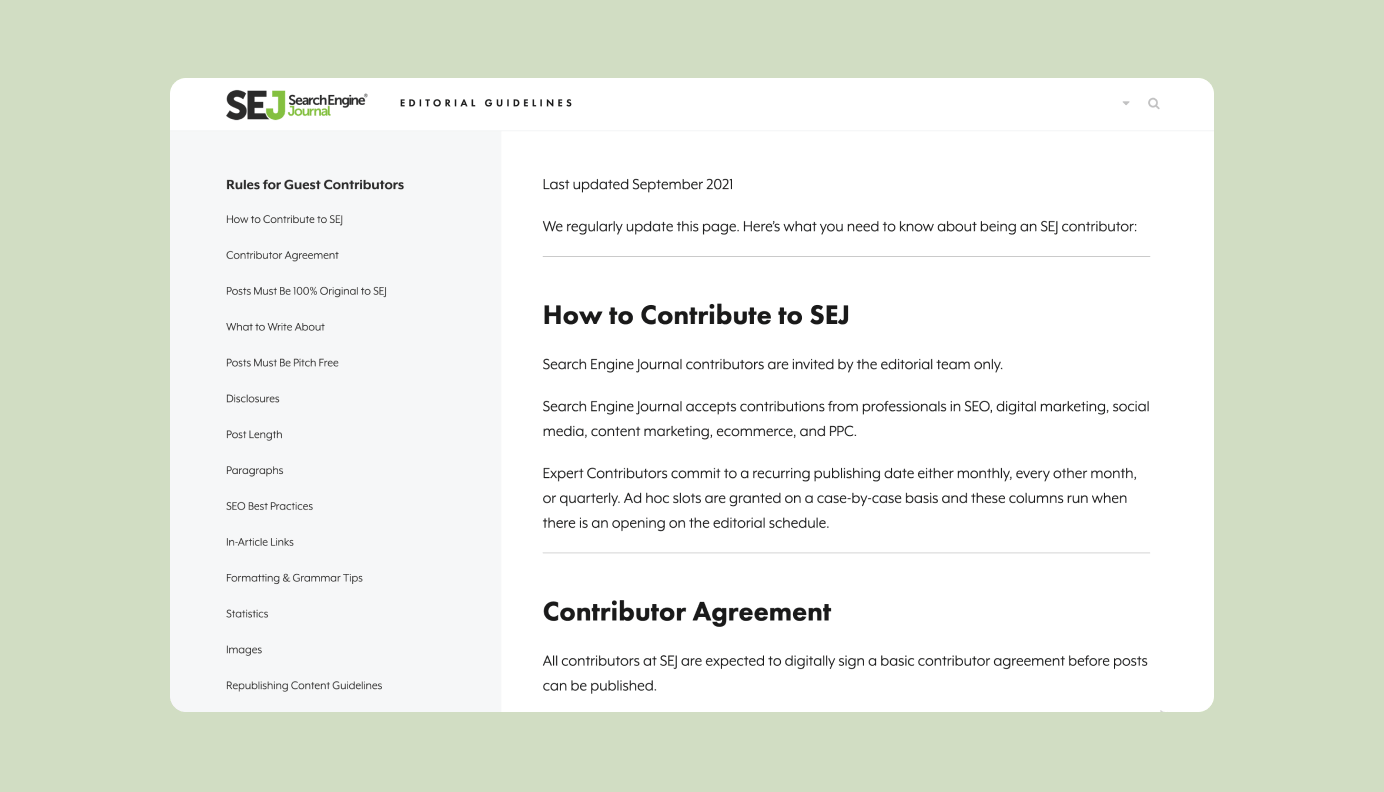
5. Best marketing style guide: HubSpot
Although its primary focus is on design and aesthetics, the HubSpot style guide is still filled with take-aways for content marketers. For example, it goes into detail about how to talk about the brand, including their “Grow better” tagline and what it means, as well as their preferences about compound naming. This is more useful for those who tackle more public-facing text, like marketing campaigns, rather than something that’s created more so for customers, like a blog post. Other useful points to take from this content style guide example is the use of “Golden Rules,” pre-approved page templates which help content better conform to company branding, and directions on implementing calls-to-action.
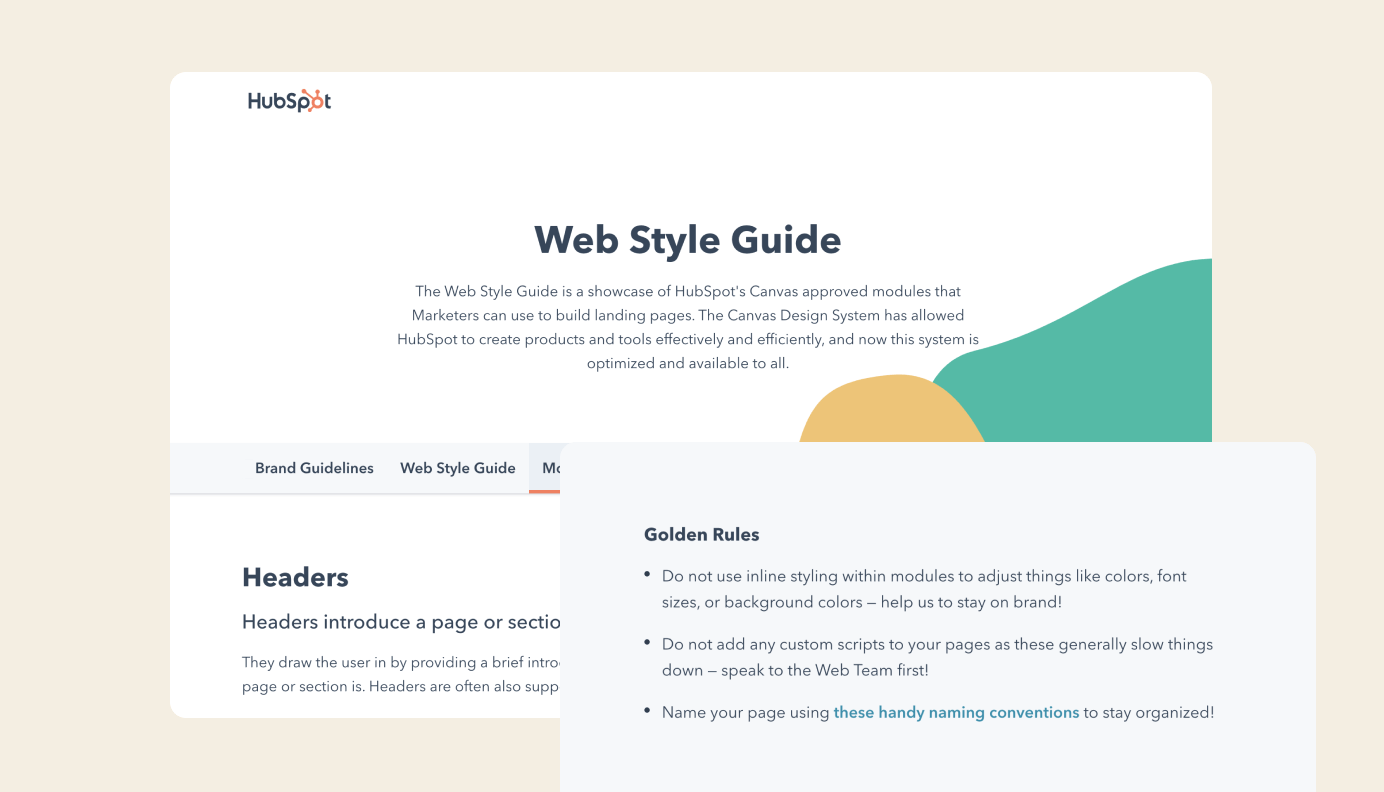
6. Best data-driven style guide: GitLab
Even at a company that may not be as content-focused, it’s still important to make sure that those who do create content like blog posts are able to quickly and easily stick to the script. GitLab’s guide starts by defining who the guide is for, and what it can help them do, and then it dives into the details of creating blog posts.
Another key aspect of this guide is that it goes into guidelines for what kinds of posts do well, even including a pie chart detailing the mix of content they’re looking for — that helps writers stay within the company objectives while still bringing creativity to their job. Finally, the use of links to examples of different post types is perfect for those who may have just joined the company and want to quickly get up to speed.
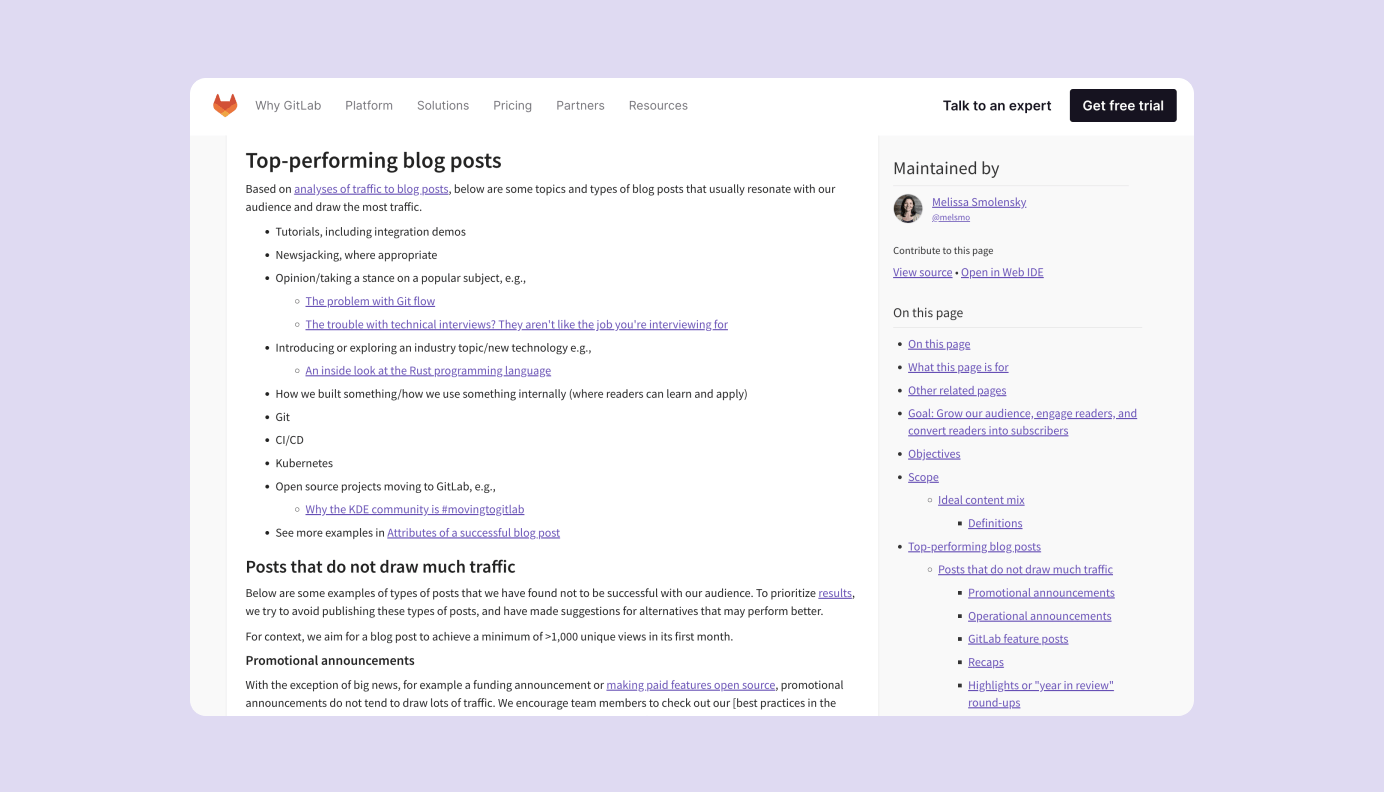
7. Best AP-like style guide: Epic Content Marketing
Like the NYU social media style guide example, Epic Content Marketing’s sample style guide takes a creator-first approach. In this case, they consider “frequent considerations,” like article formatting and relevant grammar questions, right at the start. This way, readers can quickly reference those without having to dig through the 12-page document. It also has a glossary section reminiscent of the AP Stylebook or the Chicago Manual of Style (both useful references when creating guidelines around content) as well as a section dedicated to “common industry terms.” That helps bridge the gap for those who may be new to the industry.
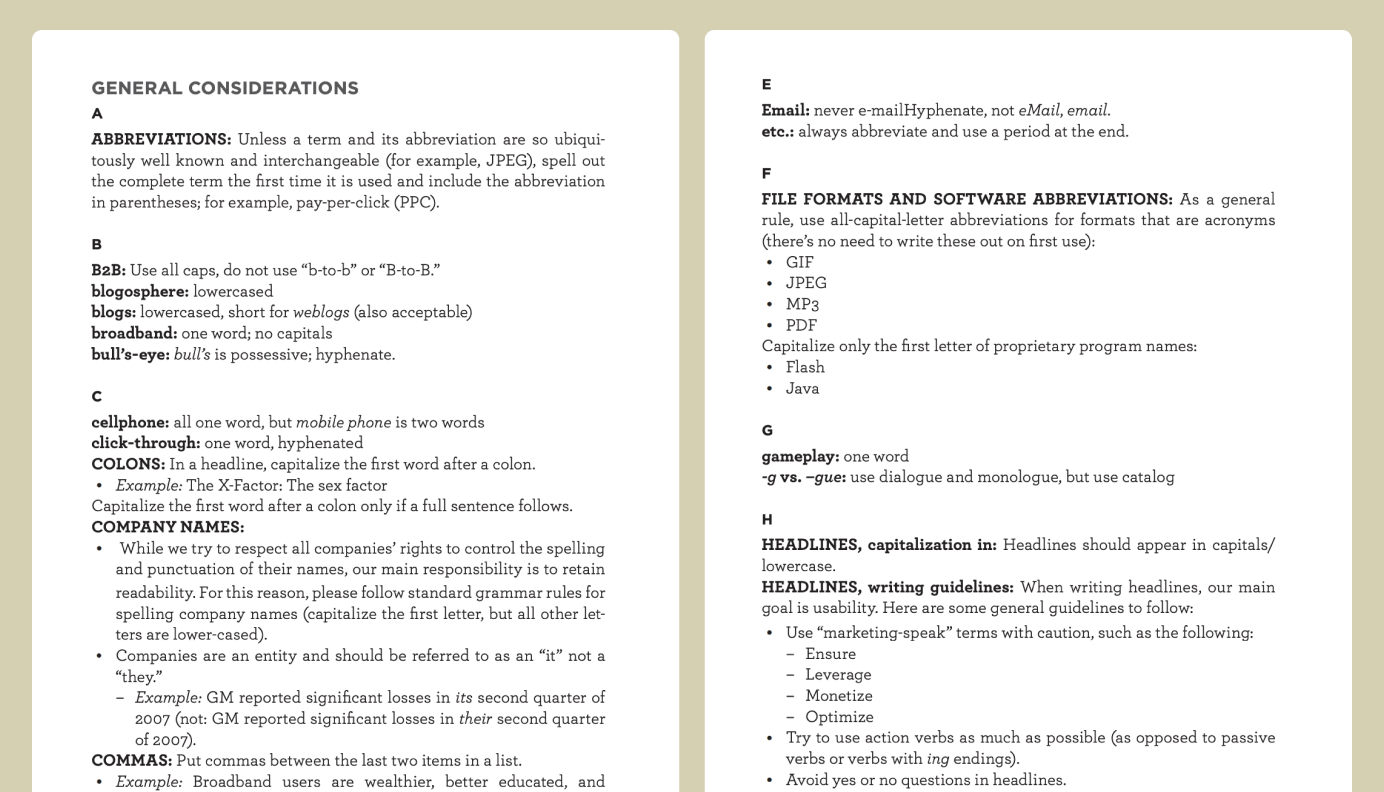
8. Best media style guide: Buzzfeed
The Buzzfeed style guide straddles the line between traditional media and content marketing, but there are still lessons to be gleaned from its approach. For example, it includes an extensive word list that goes through the publications’ specific preferences for commonly used words, paired with examples of proper use of those.
Another key aspect here is that it provides guidance around talking about the LGBTQ+ community and race and ethnicity. This is not something that all companies address, but it should be a part of any complete style guide. For those writing a style guide, Writer’s Diversity and Inclusion Glossary would be a good place to start researching this vital aspect.
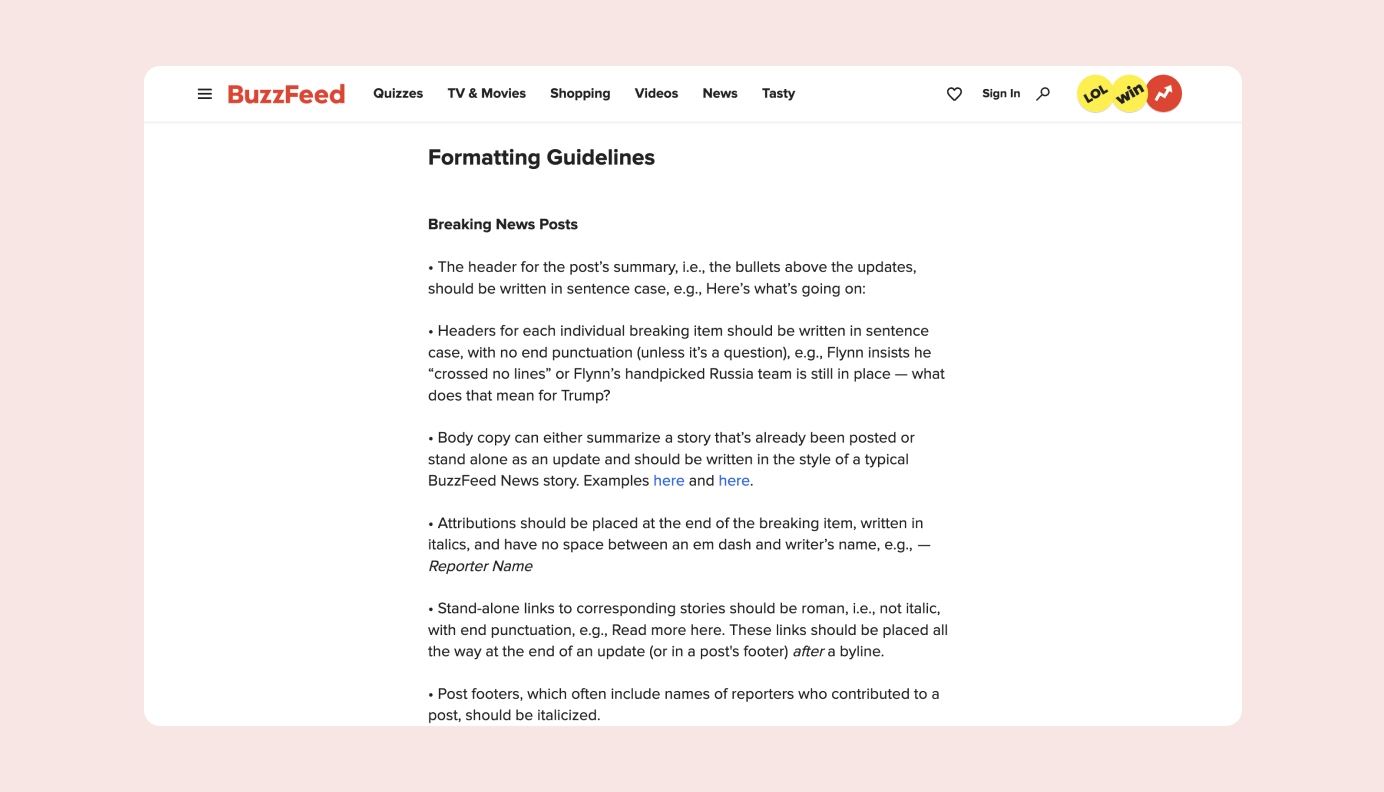
9.Best editorial style guide: Drupal
The Drupal style guide takes a basic style guide and elevates it with the use of color-coded check- and x-marks — plus the use of bolded text and jump-links — to help readers quickly understand what is desired for content, versus what isn’t. Another idea that may be worth pulling from this guide is that they address the question of British versus American English, which is essential as an international company. By getting ahead of that seemingly small question, you can save yourself a lot of time and frustration during the editing process.
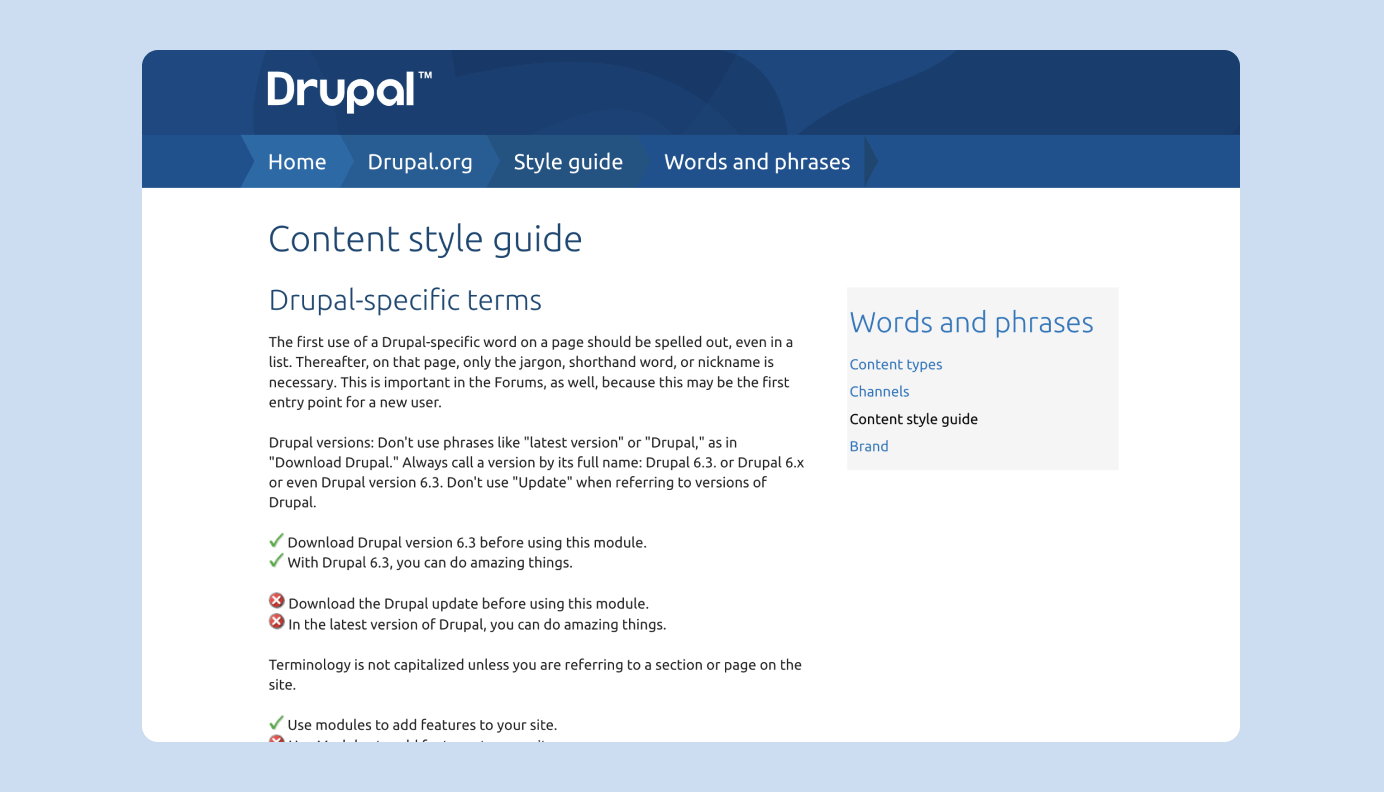
Whether you’re in tech, content marketing, or another field, building a successful style guide is vital to creating a cohesive brand. And while it can seem somewhat intimidating, taking inspiration from the above examples is a great place to start.






